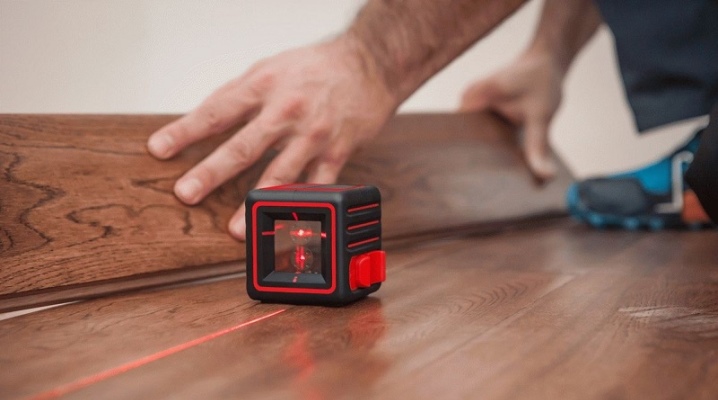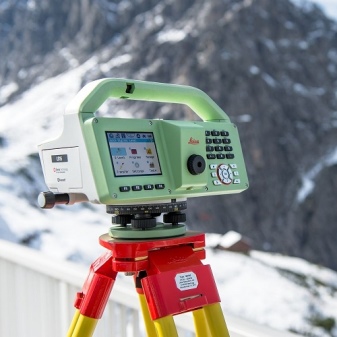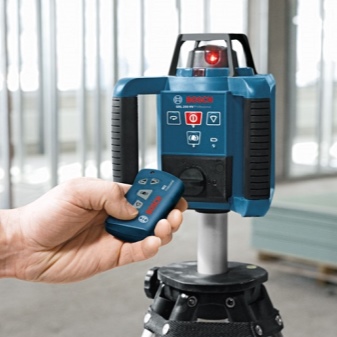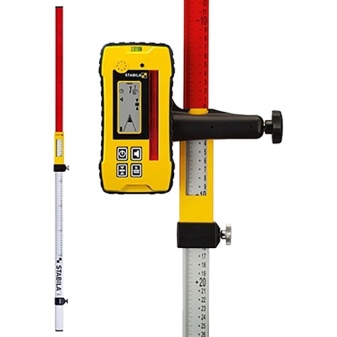The device and principle of operation of the level

A level is a device designed to determine the difference (difference) in heights of two points located at some distance from each other. There are many types of leveling devices, but they all boil down to solving the problem of either visually determining this difference, or reading it using various devices (for example, digital ones).
To understand exactly how the leveling is performed and which versions of this device are best suited for certain tasks, it is necessary to clearly understand the general design of the level.

Device
Levels used in geodetic surveying and in construction are divided into several large categories. These are traditional optical devices, as well as more modern devices using electronic technology and laser radiation. They all have a different structure. Let's consider in order the basic principles and features of each of these categories.


Optical levels: design and principle of operation
An optical-type leveling device appeared earlier than others. The structure of all such devices includes a telescope with an eyepiece and lenses that provide an approximation of the required number of times. Previously, all optical levels required manual aiming at the point of interest and focusing on it using various screws - lifting, pointing and elevation. For accurate placement of the telescope into the horizon, a cylindrical level was attached to it.
For measurements, an important component of the level is the measuring rod. Also, all models of optical levels are equipped with a filament rangefinder for measuring distances, and some are equipped with a horizontal limb, which allows you to measure angles in the horizontal plane.


The principle of operation of such a device is quite simple. The level is installed on a level surface, with the help of screws, the telescope is brought to a horizontal position. The two points on the ground - the starting point and the one to be measured - must be clearly visible through the eyepiece. The measuring rod is first set to the starting point, and the readings are taken along the leveling thread (more precisely, along the middle thread of this mesh). Then the staff is transferred to the point to be measured and the readings are taken again. The difference between them is the desired value.
Most of the levels used in modern geodesy and construction are somewhat different from those described above. For example, most models are equipped with an expansion joint. A compensator is a device designed to automatically align the instrument to the horizon. The use of a compensator makes measurements more accurate and easier.
Levels equipped with a compensator have a special marking in the form of the letter "K" and usually there is no cylindrical level (as it becomes unnecessary).


Features of digital levels
In addition, there is a category of digital levels that do not require visual determination of the height using a measuring rod (this function is performed by a digital reading device). They have significant advantages and are widely used as professional measuring instruments.
The undoubted advantages of electronic levels include automation and stability of measurements. The digital reading device is in any case more reliable and accurate, since its work does not depend on the human factor and is much less dependent on visibility conditions.
The diagram of the main components of a digital level differs from an optical level by the presence of a reading device and a screen on which readings are displayed, as well as a special measuring rod. This rail has unique barcodes. The reading device can accurately determine the height from the one of these codes to which the level pipe is pointed. The altitude readings will be shown on the display.


Taking readings is started at the touch of a button, and various models of digital levels have the function of saving and exporting values.
Since the device is used in the field, its design always includes a housing with increased protection against dust and moisture. The structure of the telescope differs little from the design of the optical device; it also has lenses with a magnification factor of 20 to 50 times. The higher the multiplicity, the more accurate the device is.
Electronic devices can also have a horizontal angle measurement function.
Those models that have a horizontal limb for these purposes are marked with a special designation in the form of the letter "L".


Laser levels
Devices with laser emitters stand out in a separate category. This level is designed in an original way and does not have a telescope. Visual focusing on the measured point is carried out already due to the laser, which is projected into a clearly visible light line (in some cases - into a point).
The laser is limited in range, which is the main disadvantage of this type of device. But they are convenient to use for household and construction purposes. Laser models with a short range are inexpensive, they are used indoors during construction work, marking, when installing various structures and furniture.


For work in open areas, laser levels of a special class are also produced, which can project light to more distant points. They are often used in conjunction with a special laser detector and are successfully used at distances up to 500 m.
A device of this type includes an LED (one or more) and an optical system that projects the radiation of the LED into a plane.
The LED can be arranged as a fixed emitter or rotating (for rotary models).


Focusing
The taking of readings of the device is preceded by the focusing procedure. For focusing, a special element is used - a ratchet, which rotates to guide the focusing lens. When a sufficiently clear image of the measuring rod is obtained, it is also necessary to achieve a clear image of the reticle.
The middle thread of this mesh will determine the height. To make it clear, you need to rotate the eyepiece knee to the desired position.
In optical levels of classical design, you can see the bubble ampoule of a cylindrical level through the telescope. Focusing on the bubble, the pipe is brought to a horizontal position by rotating the guide screws.
If the problem of horizontal alignment is solved with the help of a compensator, there is no need for a cylindrical level on the telescope, but there is a setting level on the body of the device. With its help, you must place the device on the stand level, adjusting its position with the screws, and only then focus.


Level accessories
Additional accessories of the device include tripod stands and measuring rods.
The tripod consists of light alloys or aluminum and serves to set the device in the desired position and at the desired height. When choosing a tripod, you should pay attention to its maximum height, mount (it must be ergonomic and firmly fix the device in the required position), as well as strength and weight.
The rake deserves close attention.It should be of sufficient length (staffs of different sizes are produced) and have a scale of values that can be clearly seen in the eyepiece of the level from a long distance.


All models of measuring rails are marked with the letters PH and the numbers following the letter designation. For example, RN 3-2500 means the following: a leveling rod with an accuracy of 3 mm, a length of 2500 mm.
Some slats are of a folding telescopic type and are marked with the letter "C".
When choosing a leveling rod, proceed from the fact that their length ranges from 1 to 5 m, and the measurement accuracy depends on the material from which the rod is made. Invar is a special alloy that is not very susceptible to expansion when exposed to temperature.
Leveling rods of increased accuracy are made of it.


conclusions
The device and principle of operation of the level are different depending on its type. Optical and digital instruments have an axis of sight located along the telescope, which must be set in the desired direction and horizontally. For this, both an optical system and digital readout devices and automation elements such as a compensator are used.
Using digital levels and models with a compensator is easier than using conventional instruments. At the same time, digital devices require a power supply, protection from dust and moisture, and can also cost more. Laser levels are a separate type.


You can learn how to use the level in the video below.













The comment was sent successfully.